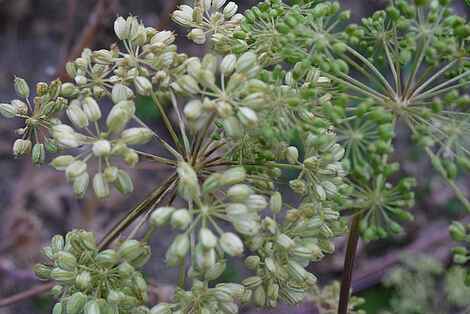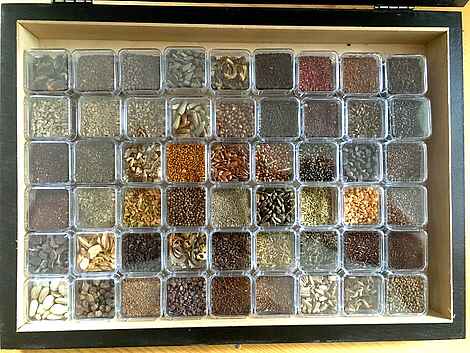Ruth Richter
Seeds are the capital of the earth – without them there is no survival and no human nourishment. Many seeds survive for a long time in a dried state, but not forever. If a variety or plant species is no longer cultivated and does not grow anywhere else, the capital is often lost within a few years: as soon as the seeds no longer germinate. This is how loss of biodiversity happens.
Work on the conservation of genetic resources began in Switzerland around 1900. Local cereal varieties are still preserved today in the Nationalen Genbank in Changins (VD) [National Gene Bank in Changins.] More than 10,000 stocks of cereals, vegetables, fodder and medicinal plants are stored frozen there.
A seed's longevity – how long it remains viable and can be cultivated again – varies depending on the species, variety, population, and even between individuals within a population. The science of seeds is still in its infancy. While it is known that initial seed quality, processing, and storage conditions play a critical role in successful storage, how these different factors interact is largely unknown. The FAO suggests testing for germination every 5-10 years; many gene banks test after 15-20 years. However, as a few studies on wild plants have shown, such standards do not work for all plant species, because the longevity of seeds varies greatly depending on the species. Knowledge of species-specific longevity is essential for the effective management of gene banks, as it determines the choice of testing and regeneration intervals.
The HORTUS OFFICINARUM association, which is affiliated with the Natural Science Section, has been responsible for the regeneration of aromatic and medicinal plants stored in the gene bank, most of which originate from wild plant populations, as part of Projekten des Nationalen Aktionsplans [National Action Plan projects] since 2015. This included developing a scheme that specifies the future test frequency for the various species. Initial germination tests after gene bank storage of 6 to 28 years showed germination rates between 0 and 100 %, with no direct correlation to the storage period. As there is no data available in the literature for most species, the only way to obtain information on species-specific shelf life is to rely on our own experience: the evaluation of the germination tests carried out as part of the NAP projects over a period of about 10 years and our own horticultural expertise.
So, for the sake of clarity, I compiled around 200 germination tests in a table and used it to make recommendations to the gene bank, with the knowledge that this is a balancing act. A few seed stocks have been lost because they were tested too late. For example, three successions of Arnica montana did not germinate, even after 5 sowings under varying conditions. Therefore, in general, Arnica seeds can not be stored in the gene bank for 20 years without losing their germination capacity. But testing too early and too often to prevent such losses can tragically lead to limited seed stocks getting used up for testing. Then regeneration can no longer take place.
If testing results are bizarre, e.g. if a stock becomes increasingly germinable with storage, we have the well-known scientific phenomenon that the results merely show how little is known. The recommendation for how often the seed of a particular species should be tested is on uncertain ground. However, if the germination capacity after 10 years is around 10 %, it is clear that even after regeneration it must be tested again after 10 years at the most. If, on the other hand, the germination capacity is still above 80 % after 20 years, the stock can be considered unproblematic and can wait another 20 years until the next test.
If sufficient seed is available, testing can be repeated 1-2 years after storage. If the germination capacity proves stable, the stock can be kept for a longer period of time. However, if there are several stocks of the same species with contradictory test results, the testing frequency should be based on the batch with the lowest results. The assessment of testing frequency must therefore remain dynamic and take into account the latest results – the management of gene banks is a challenge to remain mentally alert.
Or via Bank Transfer:
| CHF | EUR | |
| Allgemeine Anthroposophische Gesellschaft Postfach, 4143 Dornach/Schweiz Raiffeisenbank Dornach, CH–4143 Dornach BIC: RAIFCH22 IBAN: CH54 8080 8001 1975 4658 2 ⇨ Payment Purpose: KST 1124 | Allgemeine Anthroposophische Gesellschaft Postfach, 4143 Dornach/Schweiz GLS Gemeinschaftsbank eG, DE-44708 Bochum BIC: GENODEM1GLS IBAN: DE53 4306 0967 0000 9881 00 ⇨ Payment Purpose: KST 1124 |

